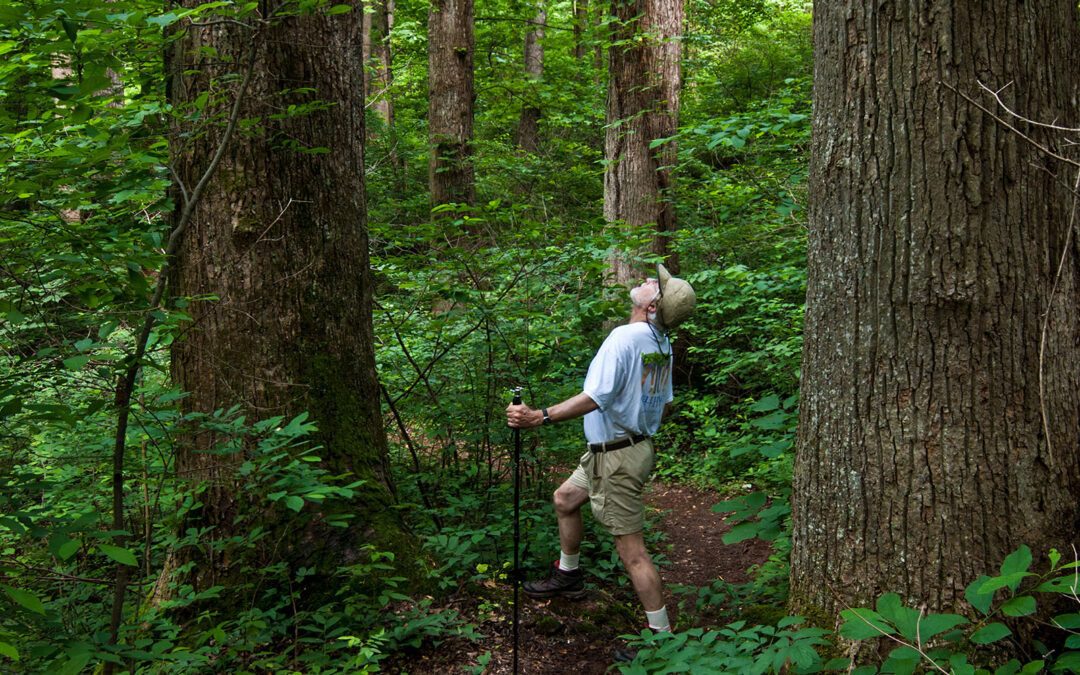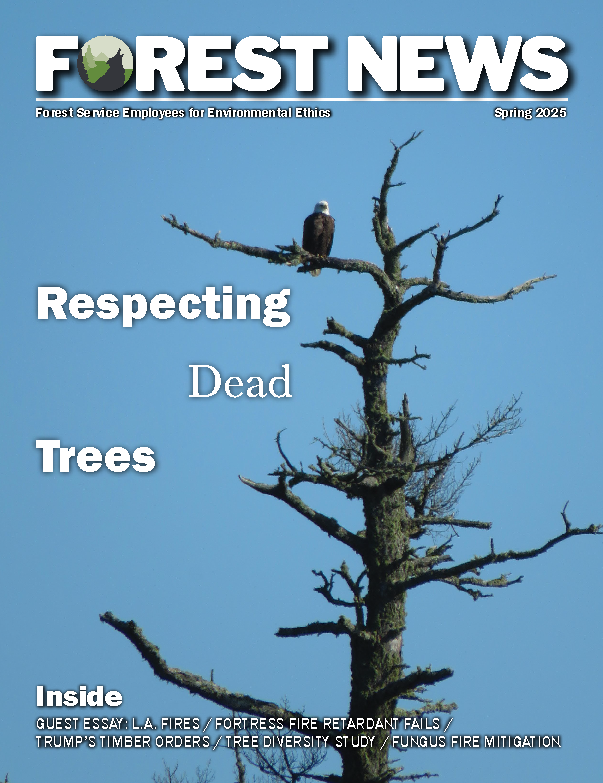In the Forest Service old-growth analysis released in June, the Biden administration recommends restricting — but not eliminating — old-growth logging on our national forests. This draft environmental impact statement (EIS) proposes amending all national forest management plans to “institutionalize climate-smart management and conservation strategies that address threats to mature and old-growth forests on Federal lands.”
After more than a century of over-logging and misguided wildfire policy, “climate-smart management” implies the Forest Service will draw upon the best available science to ensure that old-growth forests have the protections needed to retain maximum resilience. Forest Service Deputy Chief Chris French’s statement to the Associated Press suggests otherwise. French said tree-thinning on old-growth forests is needed to avoid losing more trees. “To ensure the longevity of old-growth forests, we’re going to have to take proactive management to protect against wildfire and insects and disease.”
French’s statement reflects the findings of the Forest Service Old-Growth Threat Assessment, also published in June: “Currently, wildfire, exacerbated by climate change and fire exclusion, is the leading threat to mature and old-growth forests, followed by insects and disease in the West…. Tree cutting (any removal of trees) is currently a relatively minor threat despite having been a major disturbance historically, as from 1950 to 1990 these practices were the primary reason for loss of old-growth forests.”
While the Forest Service now acknowledges that logging decimated old-growth forests, its recommendations sidestep the leading role that logging played in creating the current ecological imbalances that foster catastrophic wildfire and outbreaks of insects and disease. To counter these threats, the EIS recommends “proactive management,” a euphemism for logging, as the preferred option for improving the resilience of old-growth forests. The Threat Assessment even explains that, when Forest Service employees use the term “management,” they are talking about cutting trees, while almost everyone else, including timber-industry workers, uses the term “logging” (page A.78).
The proposed plan for old-growth forests not only dismisses the harms of logging but promotes logging as the “proactive management” practice needed to save old-growth trees from the conditions largely created by logging. Moving beyond the irony to the science, more and more studies are showing the vital importance of old, unmanaged forests.
A 2022 paper authored by DellaSala et al. reports that unmanaged mature and old-growth (MOG) forests “provide superior values compared to logged forests.” The authors conclude, “There are climate, biodiversity, and drinking water benefits for choosing the upper bound 100% target for MOG [protections] on federal lands.”
The forest management recommendations in the EIS fall well short of the 100% protection recommended by DellaSala and other scientists. Full protection would require a widespread ban on logging mature and old-growth forests on federal lands. Conservationists urged the Forest Service to recommend a full logging ban; instead, the EIS recommends a prohibition only on “proactive stewardship” — logging — “for the purpose of timber production.”
A more restrictive management alternative described in the EIS would prohibit all commercial timber harvest in old-growth forests. This alternative would still allow “vegetation management” and is, therefore, not a complete logging ban. Still, the Forest Service discounts this alternative “from an ecological perspective” because of “anticipated negative effects” created by “limiting vegetation management tools — and thereby accepting avoidable loss of old-growth…. Consequently, the rate of restoration of old-growth will be slowest under this alternative.”
If the more restrictive alternative were adopted, it still would not apply to mature forests, even though the stated purpose of the “proposed action” is to improve and expand “abundance and distribution” of old-growth forests and protect them from “the increasing threats posed by climate change, wildfire, insects and disease.” As Blaine McFeeley of EarthJustice pointed out, “If you don’t have protections for mature trees, there will never be a new cohort of old-growth” — i.e., no increased “abundance and distribution” of old-growth forests.
With the role of historical logging discounted as a contributing factor in wildfire, insect and disease severity, climate change takes center stage as the instigator behind all of these threats, according to the EIS. For many old-growth forests in the West, the current climate is not unprecedented, and forests have managed to survive for millennia without the proactive management practices of commercial logging.
Instead of trying to protect and expand old-growth forests by “proactive” logging, scientists like William Moomaw are calling for increased proforestation — growing existing forests intact to their full ecological potential. Moomaw and his colleagues believe proforestation provides “a more effective, immediate, and low-cost approach that could be mobilized across suitable forests of all types.” Proforestation maximizes “co-benefits such as nature-based biological carbon sequestration and unparalleled ecosystem services such as biodiversity enhancement, water and air quality, flood and erosion control, public health benefits, low impact recreation, and scenic beauty.”
In announcing the Forest Service’s proposed plan for old-growth forests, Agriculture Department Secretary Tom Vilsack claims, “Recent scientific analysis shows us that many old-growth forests are under significant threat from climate change.” Yet this overriding concern about climate change has produced a plan that will increase carbon emissions while killing trees that are actively sequestering carbon.
Kristina Bartowitz, a researcher with the Department of Forest, Rangeland, and Fire Sciences at the University of Idaho, led a research group that disagrees with Vilsack’s claims. “Harvest of mature trees,” they write, releases “a higher density of carbon emissions” than wildfire by as much as 800%. “Our results demonstrate that reducing fossil fuel emissions will do more for climate mitigation potential (and subsequent reduction of fire) than increasing extractive harvest to prevent fire emissions.”
Scientists like Jack Cohen have already debunked the myth that logging our forests can protect homes and communities from wildfire. Now, an increasing body of research demonstrates that logging to improve forest health is also a myth, but “if all you have is a hammer, everything looks like a nail.” If the Forest Service would step away from its chainsaws for a moment, it might see that not every solution to forest management involves cutting down trees.
While the recommendations of the EIS would increase old-growth forest protections, a close reading reveals fundamental flaws, beginning with the omission of mature forests from increased protections. And as multiple scientists have demonstrated, the insistence on commercial logging as a necessary old-growth management tool is unwarranted.
The 90-day public comment period for the draft EIS will end Sept. 20. Anyone can submit comments through the Forest Service website at tinyurl.com/USFSOG.


